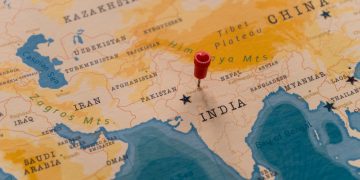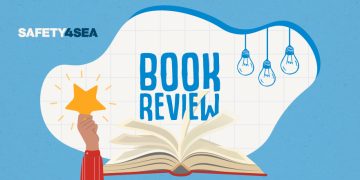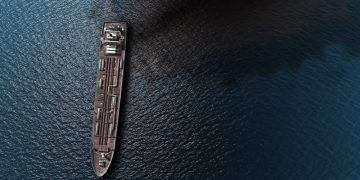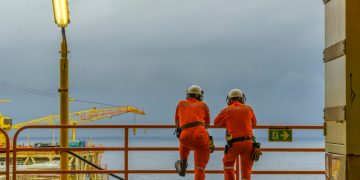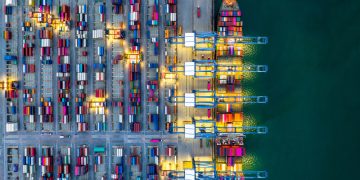Susanne Justesen, who is leading the All Aboard Alliance team in the Global Maritime Forum, highlights that although there is often a special focus on women’s challenges, many of these challenges also affect men at sea.
In general, the maritime industry needs to improve the working conditions for all genders, both at sea and ashore, and put effort in showcasing that maritime can offer attractive career prospects to the younger generation. In other words, we need to focus on ‘creating an industry that we can all be proud of’ Mrs Justesen pinpoints, explaining how the All Aboard Alliance is working towards.
SAFETY4SEA: What are the key priorities in the All Aboard Alliance’s agenda for the next five years?
Susanne Justesen: The ‘All Aboard Alliance for a diverse, equitable, and inclusive maritime industry’ was born from a shared desire among a group of senior executives to increase diversity, equity, and inclusion in maritime, thus creating an industry that we can all be proud of. The Alliance currently counts 36 member companies and the first concrete goal decided was to establish two fast-paced workstreams focused on diversifying maritime leadership and improving gender diversity at sea, while also working to collectively address sexual abuse and harassment across the industry. The ambition is to make a career in maritime more attractive and inclusive to all current and future employees.
The topic of human sustainability is currently gaining much-needed attention. But while there is a lot happening, there is still a lot to work on. The most critical priorities for the All Aboard Alliance and Global Maritime Forum are to develop concrete solutions that can make working at sea more attractive for women seafarers in particular, to directly address sexual abuse and harassment, as well as working to increase diversity at the management level .
The Alliance has high ambitions for what we hope to achieve together. For one, we hope that our current pilot project at sea will help to establish new standard practices that will make a career at sea both inclusive and attractive – for both men and women.
We approach diversity, equity, and inclusion by collectively scanning for important challenges that need to be addressed collectively. Key challenges are identified and analysed for stakeholders to co-design solutions, which can be piloted to understand what good practices look like when it comes to diversity, equity, and inclusion at sea and onshore.
S4S: How could the industry further support and encourage more women to join a seafarer career?
S.J.: Our recent publication, ‘15 Key Pain Points for Women at Sea’ , reveals a number of challenges that women seafarers face in their work life at sea. The pain points can be grouped into four main groups: the difficulty for women to succeed professionally because of their gender, how social relations at sea can be particularly challenging, more general employment challenges, and the non-inclusive physical conditions onboard vessels. By uncovering the challenges that women at sea face, we can start addressing them, and eventually reduce or eliminate them.
Within the Alliance, we have already begun the creative process of co-designing possible solutions for the pain points – in a collective process involving leaders from member companies, seafarers of different ranks, and relevant experts.
The next step in the All Aboard Alliance Diversity@Sea project is to test these possible solutions on a number of carefully selected vessels with diverse crews to explore what actually works and what does not. Working together to eliminate pain points and actively piloting solutions to make life at sea more inclusive, non-discriminatory, safe and attractive to women seafarers will undoubtedly encourage more women to pursue a career in maritime.
S4S: If you could change one thing that would have an either profound or immediate impact on making a career in shipping more attractive to young men and women (outside the industry), what would it be and why?
S.J.: It is important to note that though there is often a special focus on women’s challenges, many of these challenges also affect men at sea. Through the past years, the maritime industry has focused immensely on cost efficiency and thus paid decreasing attention to the working conditions onboard and ashore. This means that a career in maritime is not as attractive to younger generations as it used to be.
Last year, we asked young maritime professionals to give us their take on areas where the maritime industry needs to improve. They very clearly identified six areas we need to collectively address in order to make the maritime more attractive to them and their peers, namely diversity, inclusion, decent work conditions, flexibility, career opportunities, and purpose and values. Key issues mentioned by the young people include lack of shore leave, lack of awareness for mental health, and limited opportunities to transition between sea- and shore-based careers. I think we need to carefully listen to these young maritime professionals and find ways to engage them in making it happen.
S4S: Do you have any new projects/plans/initiatives to further support DEI within maritime that you would like to share?
S.J.: The All Aboard Alliance has now been in existence for a year, and will thus soon come out with the very first report with annual insights about the most powerful practices and learnings on how to strategically improve diversity, equity, and inclusion. I strongly believe the collaboration between Alliance members is key in making the maritime industry more inclusive. No one company can make this change, but by working together and sharing learnings, best practices, and high ambitions – as we do in the pilot – we can make a real change. The first All Aboard Alliance Annual Insight Report is going to be published in June and will be published on an annual basis going forward. We hope that more companies will join the Alliance and join our work on making the maritime industry more diverse, equitable, and inclusive.
S4S: On Women Day in Maritime, what is your key message to industry stakeholders?
S.J.: My key message to the maritime industry is that it is critical that we put more effort into treating all our people with respect and dignity, regardless of gender. As the report shows, women face specific challenges when they pursue a career at sea. We need to address these challenges if we want to be able to compete with other industries for the best talent. We need to move away from merely complying with minimum requirements towards actively co-designing better and more attractive working conditions for all, at sea and onshore – for all genders.
The All Aboard Alliance for a more diverse, equitable, and inclusive maritime industry
– Launched in May 2022
– 36 member companies that share a vision for a maritime industry we can all be proud of
Designed around five principles:
- Appoint a business sponsor
- Equip and educate people
- Create and maintain an organizational culture of equity and belonging
- Capture relevant data and develop insights
- Communicate commitment and progress
The views presented hereabove are only those of the author and do not necessarily reflect those of SAFETY4SEA and are for information sharing and discussion purposes discussion purposes only.






